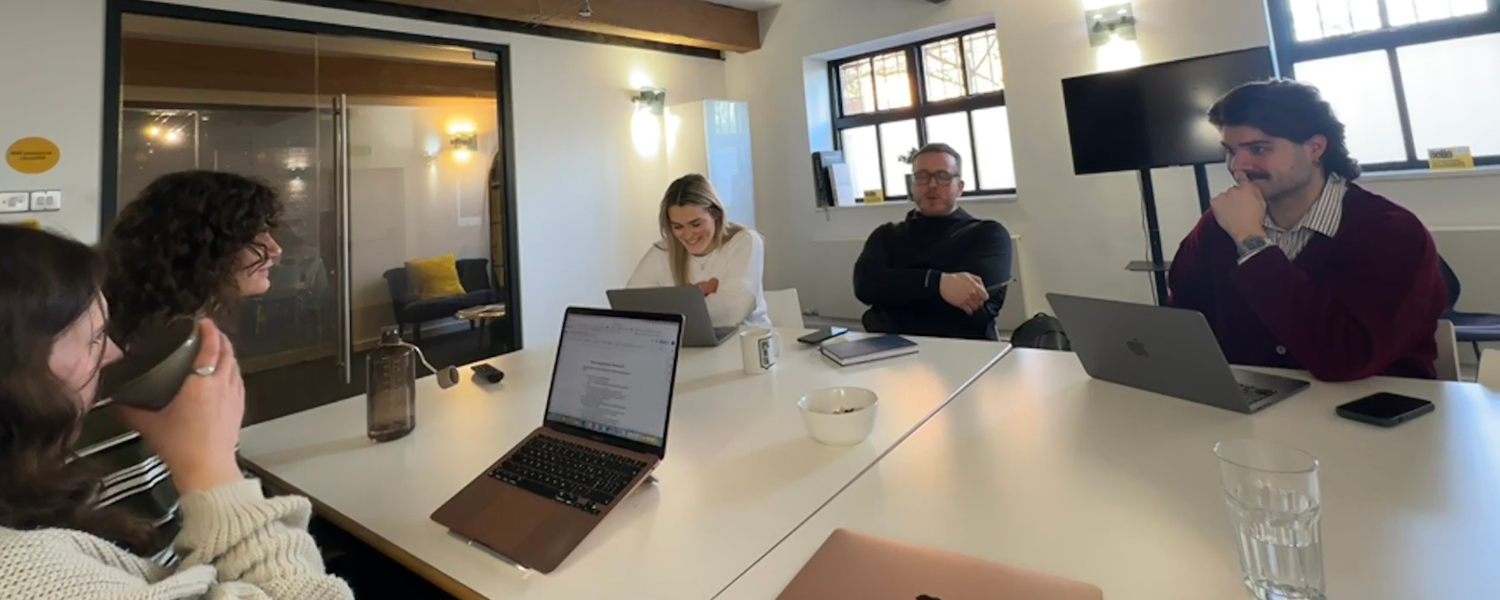How To Build Flexibility Into Your Content Strategy

There’s a lot to be said about a yearly content plan. That sense of structure, control and predictability about what you’ll produce and when is reassuring – especially when you’re busy with other work priorities. But when the world, the market, and even your own business changes so rapidly, that strict structure you previously leaned on can quickly become your downfall…
In other words, rigid content plans are great until they’re not. And that’s why you need to build flexibility into your strategy. This is more than having ‘just in case’ options – it’s about empowering you to react quickly to your audience with tailored content that gets off the start line quickly. Here’s how it works…
Develop a balanced content plan
Annual content planning allows you to get your goals out on the table, map out different content types, and identify milestones or events you want to hit throughout the year – but it doesn’t leave much wiggle room. Alternatively, sprint-based or monthly content planning relies on a more agile approach to break down content creation into focused periods. This keeps you much lighter on your feet, yet it could blur that long-term vision.
Instead, you need the best of both worlds: a long-term plan that leaves the door open to regular review cycles. This will help you to reassess your strategy, incorporate feedback, and react quickly without losing sight of those ultimate goals.
Set a weighting of your planned content against reactive content to keep you accountable here, like 80:20. Put aside 80% of the year for your fixed marketing commitments, which might be based around key dates and business or product updates. The remaining 20% should be free for experimentation or topical content and slotted in when you’ll have the resource for it.
Prioritise your spending
Now take the same approach to the money side of things. Budget planning should be part of the fabric of your content plan, taking into account the past, present and future. Start by evaluating previous content performance against the investment you put into it. After you’ve identified high-value initiatives to take forward, you can start prioritising between the “must-haves” and “nice-to-haves” in your current plan, leaving a little left over for the unexpected.
Try tiering your content priorities on a scale to help crystallise what you can afford. For example, say your primary revenue driver (like your SaaS platform) takes precedence over your supplementary tools. If you know you can produce 10 pieces of content each quarter, you could pick 6 ideas to promote the platform and 4 for the rest.
The trick is, once again, to remain flexible. Internal or external changes might mean some initiatives are no longer possible, so revisit the plan and reallocate the budget as a constant process. Having ideas for ‘filler’ content can help here in the event that something like a campaign or product launch gets pushed back.
Create adaptable content frameworks
Next it’s about focusing your content plan and building in processes to make creation easier. Start by pulling together an agile framework with a set of content pillars designed to expand or contract. These will be the core themes that your content is built around, but they may also contain subthemes within each one. Be prepared to add or remove themes in line with any market shifts to keep your pillars relevant.
Make sure you’re ready to adapt and react when change happens by creating templates for rapid content production when the pressure is on. For instance, you might have a set brief to make it clear what you want from your content marketing team. You may also want to give your staff everything they need to produce reactive employee-generated content.
Or how about ensuring you can consistently generate relevant content without starting from scratch? Develop a repurposing plan to identify what previously produced content can be reused. Work out which channels this can be done on – like converting a blog into a LinkedIn post, for example – and in what scenarios this might be useful so you’re ready for anything. Having a planned content series that you can pause or accelerate based on resources can also provide that extra layer of agility when you need it.
Plan for various scenarios
You can’t predict the future, but you can prepare for what could happen based on common business occurrences like sudden resource constraints or economic fluctuations. This could look like an “if-then” content roadmap, giving you a predetermined avenue to follow if X should happen, allowing you to react and adapt quickly. Go granular with this by identifying which metrics should trigger which plan adjustments, and refer back to your tiering system here to realign your priorities.
And finally, develop a flexible outsourced resource network that you can engage to support scaling up or down when required. You never want to be in a situation where you can’t deliver on your plan just because your internal resources are stretched. By offloading design, social media, copywriting or editing tasks, you can remain agile and keep driving things forward.
Become agile by nature
To build this flexibility into your content planning, you’ll need a team that understands why it’s important and knows how to work together to respond to changes as and when they happen. Only then can you be sure that your strategy is ready for whatever’s round the corner.
Set the foundations for flexibility and book a content strategy workshop with MYC today. We’ll help set the direction for your content and plot out where you should place your efforts next.




